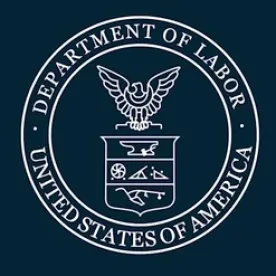On October 23, 2019, the U.S. Department of Labor (DOL) published proposed rules addressing default electronic disclosures by employee benefits plans under the Employee Retirement Income Security Act of 1974 (ERISA). In doing so, the DOL finally accounted for the evolving landscape of technology while balancing competing factors such as the effectiveness of the disclosures, the accessibility of electronic information to the workforce, and the costs involved in disseminating required information.
The 2002 Safe Harbor
In 2002, the DOL set the groundwork for electronic disclosure by establishing a safe harbor approach with certain conditions. The 2002 safe harbor is available only if
-
the plan administrator takes action to ensure receipt of the information and protects the confidentiality of the information;
-
the electronically delivered documents are prepared and provided in a manner consistent with the applicable style, format, and content requirements applicable to the particular document;
-
a notice is provided that apprises the individual of the significance of the document and the individual’s right to request a paper version of the document; and
-
upon request, a paper version of the electronically furnished documents is provided.
Additionally, the 2002 safe harbor applies only to two categories of individuals: “wired at work” employees (also sometimes referred to as “integral employees”) and consent employees. “Wired at work” refers to those employees who have access to electronic documents as a reasonable part of their employment duties. Consent employees are those who affirmatively consent to receiving plan-related documents electronically. If an individual is not part of one of these two groups, the plan administrator must give the document in paper version.
The 2019 Proposed Rules
The 2019 proposed rules provide an additional safe harbor that would permit electronic disclosure via posts on the Internet. The proposed rules do not change or replace the 2002 safe harbor. Instead, a new safe harbor created by the proposed rules serves as an additional method of complying with ERISA’s general standard for the delivery of disclosures. The proposed rules include the following key definitions and guidelines for the new safe harbor:
Covered Individual: A covered individual is a participant, beneficiary, or other individual entitled to covered documents who provides the employer, plan sponsor, or administrator (or appropriate designee) with an electronic address such as an email address or smartphone number. In the event that an employee is assigned a work email address, he or she is deemed to have provided the electronic address. Special rules cover how to address individuals who have a severance from employment, which may allow plan administrators to provide the covered documents electronically.
Covered Documents: Any pension benefit plan document required to be furnished under ERISA Title I is a covered document. Of note, the proposed rules do not apply to ERISA welfare benefit plans. (The DOL reserves the right to issue electronic distribution rules applicable to welfare plans in future guidance.) A document that must be provided on request is not considered a covered document for these purposes.
Notice of Internet Availability: Administrators must provide each covered individual with a notice of Internet availability. The notice must be furnished at the time the covered document appears on the website established by the employer. The notice must contain the following information:
-
A prominent statement/heading that reads “Disclosure About Your Retirement Plan”
-
A statement reading “Important information about your retirement plan is available at the website address below. Please review this information”
-
A brief description of the covered document
-
The Internet website where the covered document is available
-
A statement of the right to request and obtain a paper version of the covered document, free of charge, and an explanation of how to exercise this right
-
A statement of the right to opt out of receiving documents electronically and an explanation of how to exercise this right
-
A telephone number for the administrator or designated plan representative
Initial Notice: An initial notice of electronic delivery and right to opt out must be provided on paper to each individual for whom the plan administrator will use the new safe harbor. This initial notice will advise covered individuals that some or all covered documents may be provided electronically, that individuals may request paper versions free of charge, and that they have the right to opt out of receiving these documents electronically. The proposed rules generally prohibit combining the notice with other information and emphasize that the notice must be clear and understandable by the average plan participant.
Special Rules for Consolidated Notice: The DOL provides a special rule that allows for the consolidation of certain notices. Specifically, one notice of Internet availability can be used for one or more of the following documents:
-
Summary plan descriptions
-
Summaries of material modification
-
Summary annual reports
-
Annual funding notices
-
Required investment-related disclosures for plans with participant-directed investments
-
Qualified default investment alternative notices
-
Pension benefits statements
Internet Website Standards: The plan administrator is responsible for establishing and maintaining the website. The proposed rules recognize that plan administrators may delegate website responsibilities to third parties, but reminds plan administrators that they continue to have fiduciary responsibility for selecting and monitoring any delegated third parties. Covered documents must be available on an accessible website no later than the date when the covered documents must be furnished under ERISA, and they must remain on the website until they are superseded by other versions. The covered documents must be presented in a manner calculated to be understood by the average plan participant, provided in a common format that can be searched electronically, and suitable to be read both online and in printed form. Finally, the website must protect the confidentiality of personal information.
Right to Receive Copies of Paper Documents or to Opt Out of Electronic Delivery: The proposed rules provide two safeguards for individuals who prefer to receive paper documents. First, covered individuals must be permitted to request any covered documents in paper form free of charge. Second, covered individuals have the right to opt out of electronic delivery completely. After making this “global” opt-out, a covered individual must be provided all covered documents in paper form until he or she opts in to electronic delivery. The plan administrator must provide a paper notice that it will use this method and apprise individuals of their right to request paper versions and to opt out.
What Does This Mean for Plan Sponsors?
The 2019 proposed rules provide a welcome alternative for electronic distribution of employee-benefit plan communications. Plan administrators can expect a significant time and cost savings under the new safe harbor. In fact, the DOL estimates that the new safe harbor under the proposed rules will save plans approximately $2.4 billion over the next 10 years. The DOL has requested comments and information from the public on a number of items and may make some changes in response to the feedback when finalizing this safe harbor approach.
When finalized, the new safe harbor will be effective 60 days after publication in the Federal Register. The DOL proposes that the new safe harbor will apply on the January 1 following publication of the final rule in the Federal Register.




 />i
/>i
